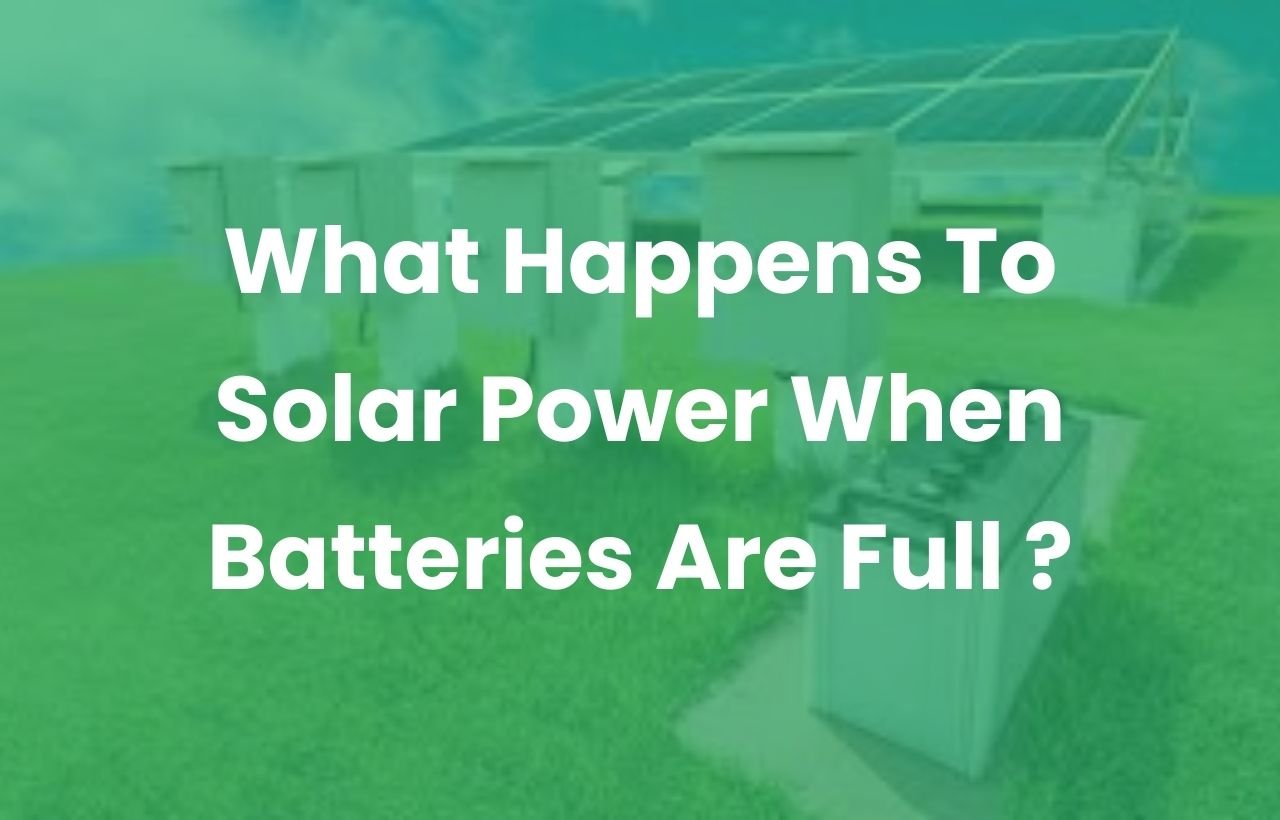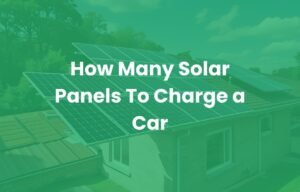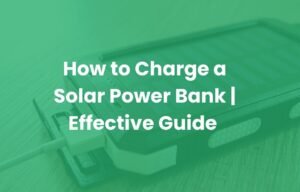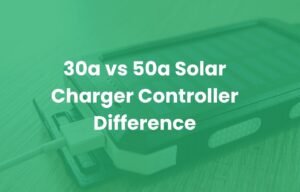You have purchased a solar panel system with battery storage. You’re generating clean energy, reducing your electricity expenses, and becoming energy independent.
Reaching 100% on your battery monitor is a very satisfying experience. Most people still question: What happens to solar power when batteries are full?
Your storage is finished, but the sun is still out and your panels are still generating electricity. Does the extra energy disappear? The simple answer to this question is NO.
Intelligent technology is incorporated into modern solar systems to manage this excess effectively. Achieving optimal energy efficiency and optimising your return on investment requires an understanding of this process.
In this article, we will discuss the journey of your solar energy and what happens to the solar power when batteries are full, and how you can use that excess solar energy.
Table of Contents
ToggleUnderstanding the Brain of Your System: The Solar Inverter
You must first understand the solar inverter in order to understand what happens to excess solar power. While your house and the power grid use Alternating Current (AC), solar panels produce Direct Current (DC) electricity. Converting DC to AC is the main function of the inverter.
One of two setups is usually present in a battery-powered system:
- A hybrid inverter that controls battery charging and discharging in addition to solar generation.
- An independent battery inverter combined with a typical solar inverter.
This device is more than a simple converter; it is the intelligent brain that directs the flow of your solar energy based on a predefined hierarchy of needs.
The Solar Energy Priority Ladder: Where Power Goes First
A built-in “priority list” is used by your solar energy system to distribute power. Electricity is always sent to the most important location first. The standard sequence of what occurs is as follows:
-
Powering Your Home’s Active Loads (Top Priority)
Powering your home’s immediate electricity needs is the primary and most crucial function of your solar panels. Real-time power is taken straight from the solar panels by any running device, including televisions, air conditioners, lights, and refrigerators. We call this self-consumption.
-
Battery Bank Charging (Second Priority)
Your home uses any solar energy that isn’t immediately used to charge your battery storage system. In the event of a grid power outage, at night, or in overcast conditions, this creates a power reserve that can be used.
-
Managing Excess Solar Generation (The “Battery Full” State)
Your system has valuable excess energy once your batteries are fully charged and your home’s live demand is satisfied. What happens next depends entirely on your system’s configuration and connection to the electrical grid.
What happens to solar power when batteries are full? (In Detail)
Your system can store it properly, send it to the grid for credits, or use it to power other appliances in your home. There are three main paths for the system to use the additional energy when your solar batteries are full. Your setup determines the route that was taken.
Path 1: Exporting to the Electrical Grid
Exporting the excess energy back to the main power grid is the default and most popular action for the majority of grid-tied solar systems.
- How it works: The excess power is detected by your hybrid inverter. By using an essential safety feature called anti-islanding, it aligns the frequency of the solar power with that of the grid and feeds it back through your utility meter.
- The Financial Benefit: This procedure makes feed-in tariffs (FIT) or net metering possible. When you export electricity, your utility company measures it and credits your account. By using the grid as a huge external battery, these credits help you offset the cost of using power from the grid when your solar system isn’t producing.
Path 2: Curtailment (Slowing Production)
If your system is off-grid or you have a non-export agreement with your utility that prevents you from redistributing power to the larger grid, the excess needs to be managed internally by the system.
- How it works: The inverter’s function is to curtails (reduces) the amount of energy generated by the solar panels. In order to achieve this, the operating point of the panels is electrically moved away from its maximum power point (MPP). The inverter, to put it simply, makes the panels generate only as much electricity as your house can immediately consume. Heat is released, and the potential excess energy is never produced.
- Is this dangerous? Modern inverters manage this procedure with ease and without causing harm to the system or panels. For non-export and off-grid systems, it is a common and secure operation.
Path 3: Diverting to a Dump Load (Smart Utilisation)
You have the option to make meaningful use of the extra solar energy instead of wasting it. This is accomplished by directing it to a dump load, which is the equipment that effectively uses the excess energy.
A water heater is the most common and effective dump load. Immersion power diverters (such as the SolarEdge Eddi) are devices that automatically identify excess solar energy and send it to heat the hot water tank in your house.
This saves the energy you would have used to heat water later using gas or electricity and gives you free hot water.
How to Prevent Wasting Solar Power When Batteries Are Full
It makes no sense to waste free, self-generated power. Here are some clever strategies to make the most of the self-consumption of your panels and make use of every watt they generate.
- Install a Solar Divertor: As we have already mentioned, one of the most economical additions for your water heater is a power diverter. It converts surplus electricity into significant savings in your gas or electricity costs.
- Implement Smart Home Automation: Automate appliances with energy management systems.
- You can set your electric vehicle (EV) charger to only work when there is an excess of solar energy.
- Use washing machines, dishwashers, and pool pumps during the hours of most sunlight.
- When the sun is out, turn on space heaters or other high-draw appliances using smart plugs.
- Right-Size Your System: Work with your installer to create a system that is appropriate for your usage habits. Frequent exports or curtailments will result from an excessively large solar array and little storage. Efficiency depends on finding the correct balance.
Conclusion
So, now you have a clear idea about what happens to solar power when batteries are full. That energy is used effectively rather than being wasted.
It can be carefully stored by your system, transmitted to the grid for credits, or utilised to power other items in your house.
You can get the full return on your solar investment if you understand this process. Even with fully charged batteries, your system is designed to be cost-effective and efficient.
What to do next? Talk to someone who installs solar panels. They may assist you in determining how to best utilize all of the energy produced by your panels.





